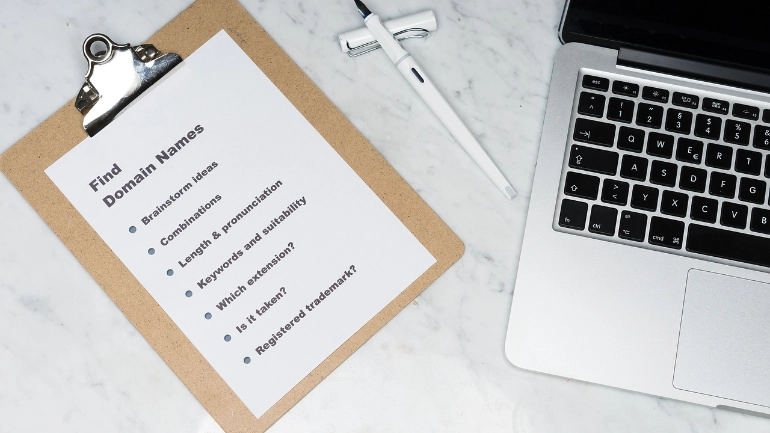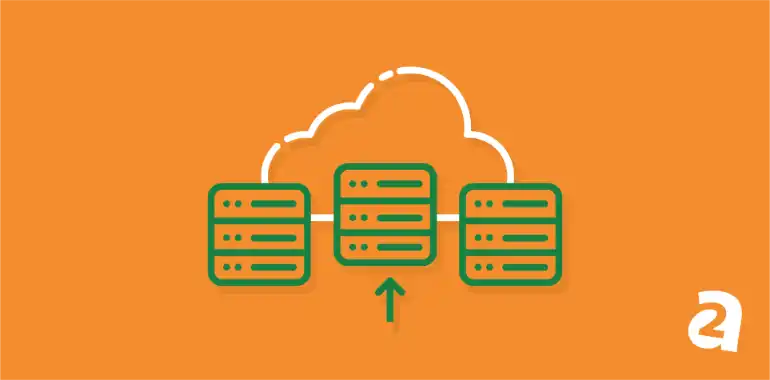- May 11, 2018
 0
0- by A2 Marketing Team
When you run a WordPress website, you’ll want to get as many eyes on it as possible. If you master the basics of Search Engine Optimization (SEO), you shouldn’t have any problem getting visitors to see your blog posts. However, there are no guarantees that those same users will stick around to check out the rest of your content.
Writing excellent content is the first step, therefore, but you also need to optimize your website to get people to stay longer. This is where related posts sections come in. This feature enables you to present similar content to your visitors organically, encouraging them to check it out.
In this article, we’re going to talk about what related posts sections are, and how they can help improve your website. Then we’ll teach you two ways to set up a related posts section in WordPress using plugins. Let’s get to it!
Why Related Posts Sections Are an Excellent Addition to Any Blog

Whether your goal is to sign visitors up for paid programs, promote your products, build your brand, or something else entirely, engagement will be a determining factor for your blog’s success. To measure engagement, it helps to pay attention to metrics such as click-through rates, the number of comments on each article, and the amount of time visitors spend on your site.
That last metric is particularly important. After all, the more time people spend on your blog, the better your chances will be of turning them into repeat visitors. There are a number of simple techniques you can use to get visitors to stay around longer, such as adding a related posts section to your website. Here’s why this approach works:
- It makes your users’ lives simpler. Related posts help visitors find more content they’re interested in without having to look for it themselves.
- You can promote less popular content. Related posts can help drive traffic to content that would otherwise be overlooked.
As for what constitutes ‘related’ content, that’s up to you to determine. Most plugins that add this feature to your site will promote content with the same category or tags as the post a visitor is currently reading. For this reason, you should pay close attention to how you organize your content, in order to achieve the best effect with your related posts.
How to Add a Related Posts Section to WordPress (In 2 Ways)
In this section, we’ll introduce you to our two favorite related posts plugins. We’ll also explain how to use them on your site. These plugins are similar when it comes to functionality, so you’re free to choose whichever one you feel more comfortable with.
1. Use the Related Posts by Taxonomy Plugin

Related Posts by Taxonomy enables you to add a related posts section to any page you want, using either widgets or a shortcode. By default, this plugin will display the most recent five posts that share any kind of taxonomy with the content a visitor is currently reading. However, you can configure it to take into account only tags, categories, or overall format (i.e. posts or pages).
On top of that, you can configure the way your related posts section looks. For example, you can choose to include only links, display thumbnails accompanied by titles, and even provide excerpts.
To get started with this plugin, you’ll first need to install and activate it. Then, navigate to the Appearance > Widgets tab and look for the new Related Posts by Taxonomy widget:
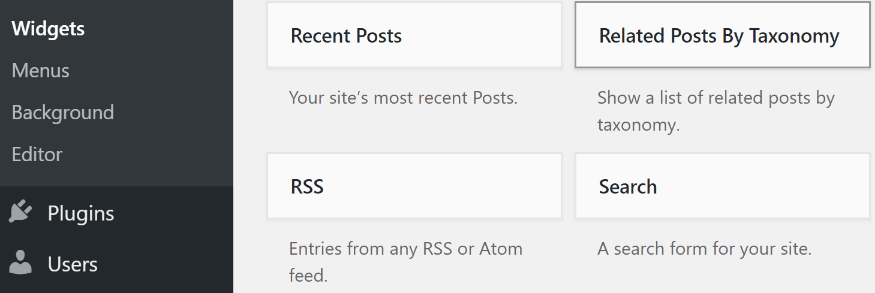
Drag the widget to wherever you’d like it to display, and then you’ll be able to configure it. First, you can set a title for your related posts section:

Next, you can choose how many posts you want your section to display, and whether you want to randomize them instead of showing the latest ones. This can be a smart option if you want to direct traffic towards old content:

Now, choose which taxonomy you want the section to pull content from:
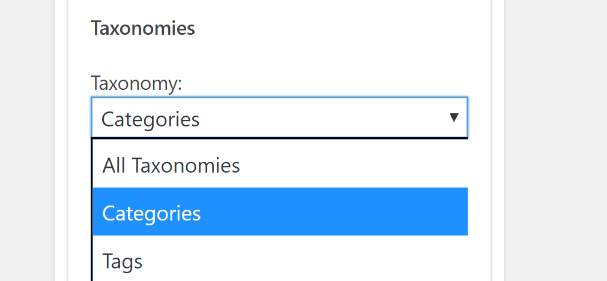
Finally, you can select the format for your related posts section. We recommend Post thumbnails, since images help catch people’s attention. Set the size of your thumbnails right below, and then save your changes:

That’s it! Your related posts section is ready to go. Keep in mind that you can also display it using a shortcode and the attributes listed on the plugin page, if you want even more control over how the section behaves. This approach can take more time to configure, however, so we recommend sticking to the widget method in most cases.
2. Try Out the Yet Another Related Posts Plugin (YARPP)

Yet Another Related Posts Plugin (YARPP) differs from our previous pick, in that it doesn’t require you to choose where your related posts section will be displayed. Instead, this plugin automatically includes it below the content on posts or pages. YARPP also offers more options for customizing the posts that will appear in the section.
To try this plugin out, first install and activate it. Next, go to the Settings > YARPP tab within WordPress to configure its settings. The first section will enable you to decide which posts you don’t want to show up in your new section:

The “Relatedness” options settings might look a bit complicated, but they’re actually quite useful. YARPP uses a score to determine which content it deems as related. The lower that number is, the more strict the plugin is about the content it shows.
In our experience, you’ll get the most accurate results by setting the Match threshold to 2. Likewise, you’ll want to set the Titles and Bodies fields to do not consider. Finally, set the Categories and Tags options to require at least one in common:
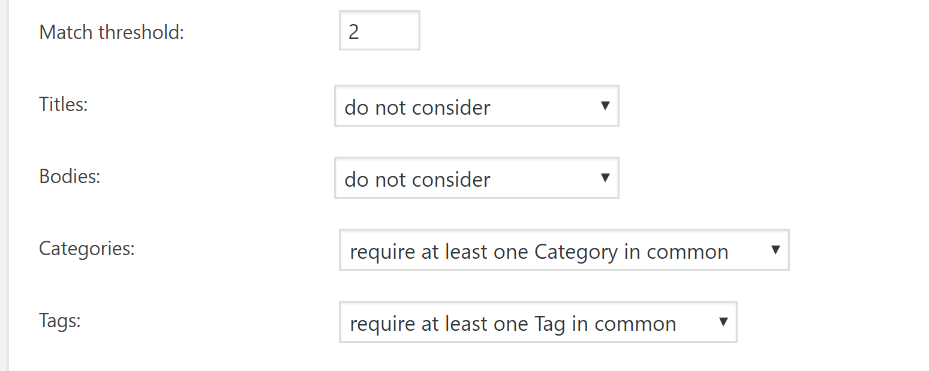
This way, you can have nearly full control over what content will show up in your related posts section, based on how you categorize your posts.
Finally, move on to the Display options section, and choose the format for your related posts. Once again, we recommend using thumbnails over plain lists:
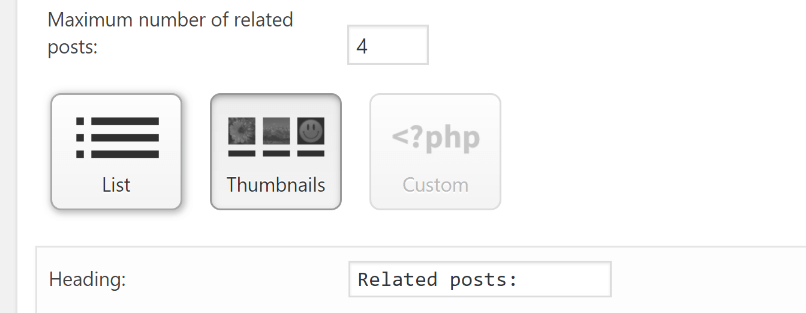
Feel free to customize the heading text for your section as well. You can also set a default image, in case any of your related posts don’t have featured thumbnails to display. Then save your changes, and your section is ready! Don’t forget to check it out on the front end to make sure it looks correct.
Conclusion
Adding a related posts section to your site improves your visitors’ experience. It points them towards more content they can enjoy, and encourages them to stick around for longer. Of course, it’s up to you to define what qualifies as ‘related’ content, so you need to pay close attention to the tags and categories you use to keep everything organized.
If you think a related posts section would make an useful addition to your website (and we bet it would), we recommend the following two WordPress plugins:
- Related Posts by Taxonomy: This simple solution can be applied using a widget or shortcode, and offers multiple configuration options.
- Yet Another Related Posts Plugin (YARPP): This plugin automatically appears on select content, and provides plenty of control over the content you display.
Image credit: Pixabay.


